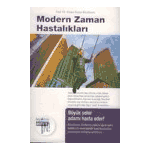İŞLENMİŞ GIDALARIN 10 TEMEL HUSUSİYETİ

Dikkat: Yazının sonunda ek var!
***
İşlenmiş gıdaların on temel hususiyeti:
BİR: Genellikle ilave şeker ve yüksek früktozlu mısır şurubu ile doludur ve diyetteki en büyük ilave şeker kaynağıdır.
İKİ: Şeker, boş kalorilerin yanı sıra, insülin direnci, yüksek trigliseritler, kolesterol ve karaciğer ve karın boşluğunda artan yağ birikimi ile ilişkilendirilmiştir. Şeker tüketiminin ayrıca kalp hastalığı, diyabet, obezite ve belirli kanser türleri ile güçlü bir bağlantısı vardır.
ÜÇ: Aşırı tüketim için tasarlanmıştır. Bu yiyecekler özellikle beyni mükâfatlandırmak için tasarlanmıştır ve bu da aşırı tüketime yol açabilir.
DÖRT Suni malzemeler ihtiva eder. Üreticiler, bu gıdalarda koruyucular, renklendiriciler, tatlandırıcılar ve kıvam vericiler dâhil olmak üzere çeşitli sebeplerle suni kimyasallar kullanırlar.
“Aşırı mükâfatlandırıcı” olacak şekilde tasarlandıkları için bağımlılık yapabilir. İşlenmiş/abur cuburdaki bileşenler tüketildikten sonra bazı insanlarda oluşan yoğun dopamin salınımı beynin biyokimyasına zarar verebilir.
BEŞ: Genellikle rafine veya basit karbonhidratlardan zengindir. Bu karbonhidratlar hızla parçalanır ve hızlı kan şekeri ve insülin artışlarına yol açar. Bunlar da, kan şekeri seviyeleri normale döndüğünde, sadece saatler sonra karbonhidrat arzusuna sebep olabilir.
ALTI: İşlenmemiş gıdalara kıyasla besin değeri düşüktür. İşlenmiş gıdalardan zengin bir diyet, hakiki gıdalardaki vitamin, mineral, antioksidan ve diğer eser besin ögelerinin eksikliğine yol açabilir.
YEDİ: Liften fakirdir. İşlenmiş/abur cubur yiyecekler genellikle lif bakımından çok fakirdir çünkü işleme sırasında kaybolur veya kasıtlı olarak çıkarılırlar. Hakiki gıdalarda bulunan çözünür, fermente edilebilir lifler, çeşitli önemli sağlık yararlarına sahiptir.
SEKİZ: Sindirilmeleri için daha az zaman ve enerji gerektirir. İşlenmiş gıdalar daha kolay çiğnenir ve yutulur. Daha kısa sürede daha fazla yenebilir, bu da daha az enerji yakılırken daha fazla kalori alımı ile sonuçlanır.
DOKUZ: Trans yağlardan zengindir. İşlenmiş gıda üretiminde kullanılan rafine bitkisel ve tohum yağları genellikle hidrojenize edilir ve yüksek miktarda omega-6 yağ asidi ihtiva eden trans yağlar haline gelir; bu da vücutta oksidasyona ve iltihaplanmaya sebep olur.
ON: İşlenmiş gıdalarda prebiyotik ve probiyotiklerin miktarı çok azdır veya hiç yoktur, bunların besin desteği olarak ayrıca alınmaları icap eder.

***
EK 1 (25.5.2022):
Türkiye’deki bu durumu, endüstrileşmenin artmasıyla beraber değişen yeme alışkanlıkları ve yaşam tarzına bağlayan Günal, şöyle konuştu: “Süpermarketlerin artması ve buralarda satılanların endüstriyel yani rafine edilmiş, hemen kana karışabilecek gıdalar olması bu konuda önemli rol oynamaktadır. Zira bir gıda kana ne kadar çok çabuk karışır veya kanın şeker düzeyini ne kadar çabuk yükseltirse o kadar süratle insülin düzeyini artırmaktadır. Artan insülin düzeyi vücutta yağlanmaya neden olmaktadır. Bu şekilde insanlar yağlanarak, obez kişiler haline dönüşmektedir. Şehirleşme ve stresli yaşam koşulları, yeme alışkanlıklarının düzensiz beslenme şeklinde değişmesi, pakete girmiş, aperatif tarzı gıdaların sıklıkla tüketilmesi obezitenin başlıca nedenleri olarak kabul edilebilir.”
Prof. Dr. Ömer Günal, obezitenin Türkiye’de önlenmesi için yapılması gerektiğini düşündüğü önerileri şöyle sıraladı:
“İnsanları doğal beslenmeye yönlendirmeliyiz. Bu nasıl olacak bilemiyorum. Çünkü süpermarketlerdeki gıdaların yüzde 99’u rafine, paketlenmiş, işlenmiş, katkı maddeleri olan gıdalar. Şehir hayatının yorucu ve psikolojik olarak yıpratıcı temposundan insanları kurtarmak lazım. İnsanlar kazanç için büyük şehirlere gelip, mücadeleler içerisine girdikçe strese giriyorlar. Stres de insanı yediren faktörlerden biri. Büyük şehirlere göçü durdurmak, refahı yükseltmek, diğer bölgelerdeki şehirleşmeyi ve iş olanaklarını artırmak birinci unsur olmalı. Sanki beslenmeyle çok alakasızmış gibi geliyor ama doğrudan alakalı. Endüstriyel gıdaların azalması da insanların kendi gıdalarını üretme fırsatlarını elde etmesiyle olacaktır. Bu da hükümet politikasıyla olacak bir şey.”
***
EK 2 (30.11.2022): İşlenmiş gıdalar sigara (tütün) kadar bağımlılık yapıyor.
Kaynak: https://onlinelibrary.wiley.com/doi/10.1111/add.16065
***
EK 5 (27.3.2023): NOVA sınıflama sistemi:
Group 1: Unprocessed or minimally processed foods. This refers to fruits, vegetables, seeds, eggs, fungi or milk that are consumed in their natural state or altered to remove inedible or unwanted parts, like stems or shells. The foods might be dried, filtered, roasted, frozen or packaged to preserve their natural state, store them or make them more palatable.
Group 2: Processed culinary ingredients. These items are derived from Group 1 or nature, and include oils, butter, lard, sugar and salt. They’re usually used to prepare Group 1 foods and are rarely consumed on their own.
Group 3: Processed foods. These foods are produced by adding items, like salt, sugar, or oil (Group 2 items) to Group 1 foods. Examples include pickles, canned fish, cheese, canned fruits or vegetables, bacon or fresh bread. The foods usually retain their basic identity and some original characteristics.
Group 4: Ultra-processed foods. These items are created by industrial processes, like hydrogenation or adding emulsifiers, artificial colors, artificial flavors or preservatives. They include prepared meat, pasta or pizza; packaged bread, cookies or cakes; and soft drinks, candy, chicken nuggets or fast food. Ultra-processed foods tend to be highly palatable, inexpensive, convenient and contain multiple ingredients.
Kaynak: https://www.huffpost.com/entry/what-are-ultra-processed-foods_l_64186cdce4b0cfde25c60853
***
EK 2 (1.3.2024): Ultra-processed foods damage health and shorten life
Hundreds of epidemiological studies and meta-analyses have reported associations between ultra-processed food consumption and adverse health outcomes. In a linked paper (doi:10.1136/bmj-2023-077310), Lane and colleagues have now carefully reviewed the evidence from 45 meta-analyses encompassing almost 10 million participants.1 They found direct associations between exposure to ultra-processed foods and 32 health parameters including mortality, cancer, and mental, respiratory, cardiovascular, gastrointestinal, and metabolic ill health. For instance, a pooled analysis of seven cohorts showed a 10% increase in ultra-processed food consumption to be associated with a 12% (95% confidence interval 1.11 to 1.13) higher incidence of type 2 diabetes.
The quality of the evidence was strong for all cause mortality, obesity, and type 2 diabetes (this evidence was rated as of moderate quality using the GRADE system, which initially considers all observational studies as low quality evidence). Overall, the authors found that diets high in ultra-processed food may be harmful to most—perhaps all—body systems.
Ultra-processed foods are not merely modified foods. As defined by the Nova classification,2 they are formulations of often chemically manipulated cheap ingredients such as modified starches, sugars, oils, fats, and protein isolates, with little if any whole food added, made palatable and attractive by using combinations of flavours, colours, emulsifiers, thickeners, and other additives. No reason exists to believe that humans can fully adapt to these products. The body may react to them as useless or harmful, so its systems may become impaired or damaged, depending on their vulnerability and the amount of ultra-processed food consumed.
Lane and colleagues call for more mechanistic research to identify how consumption of ultra-processed food harms health.1 This does not mean that public policies and actions should be delayed. As these authors acknowledge, multiple mechanisms, likely acting in combination, are plausible.
The grossly imbalanced composition of ultra-processed foods means that their increased intake makes diets energy dense, high in sugar and saturated fat, and low in protein, fibre, micronutrients, and health protective phytochemicals such as flavonoids and phytoestrogens.345 They also contain additives including colours, emulsifiers, and sweeteners, linked by experimental and epidemiological evidence to imbalances in gut microbiota and systemic inflammation.1
Techniques often used, such as extrusion and intense heat, degrade the natural food matrix causing loss of nutrients,6 disturbances in food digestibility and nutrient bioavailability,7 and reduction of satiety.8 They also make ultra-processed food soft, which shortens chewing and swallowing time, and increase energy intake.9 Consumption of these foods has also been associated with increased concentrations of acrylamide and phthalates in the blood or urine; these are toxins created during processing or released from packaging materials, respectively.1011
Ultra-processed foods are engineered to be highly desirable, combining sugar, fat, and salt to maximise reward,1213 and adding flavours that induce eating when not hungry.14 Many are addictive, judged by the standards set for tobacco products,15 and aggressively marketed with meal deals, super sizing, and advertising.
What can be done to control and reduce production and consumption of ultra-processed food, which is rising worldwide?16 Reformulation does not eliminate harm,17 and profitability discourages manufacturers from switching to make nutritious foods. Moreover, the investment management companies that increasingly dominate corporate shareholdings would likely resist any such change.18
Therefore, public policies and actions are essential. These include national dietary guidelines that recommend varieties of unprocessed or minimally processed foods and freshly prepared meals and avoidance of ultra-processed foods19; institutional food procurement that aligns with these guidelines; front-of-pack labels that clearly identify ultra-processed foods; restricting advertising and prohibiting sales in or near schools and hospitals; and fiscal measures that make unprocessed or minimally processed foods and freshly prepared meals as accessible and available as, and cheaper than, ultra-processed foods.
Importantly, smallholders, family farmers, and independent businesses that grow, make, and sell unprocessed or minimally processed foods should be recognised, supported, and fully represented in all policy making and its monitoring. Conversely, corporations responsible for ultra-processed foods should be required to explain publicly how their products are made and to give evidence to but not be represented on policy making bodies.
It is now time for United Nations agencies, with member states, to develop and implement a framework convention on ultra-processed foods analogous to the framework on tobacco. These agencies also have an important role in publishing, publicising, and promoting examples of best practice.
Finally, multidisciplinary investigations are needed to identify the most effective ways to control and reduce ultra-processing and to quantify and track the cost-benefits and other effects of all such policies and actions on human health and welfare, society, culture, employment, and the environment.
Kaynak: https://www.bmj.com/content/384/bmj.q439
Makale: Reasons to avoid ultra-processed foods
***
















